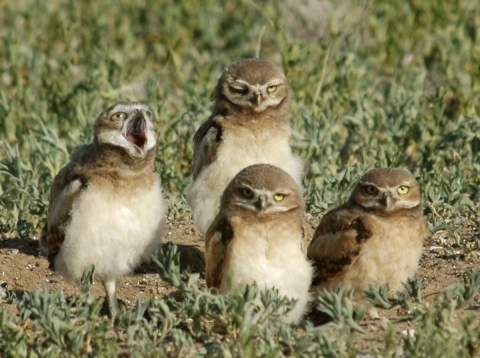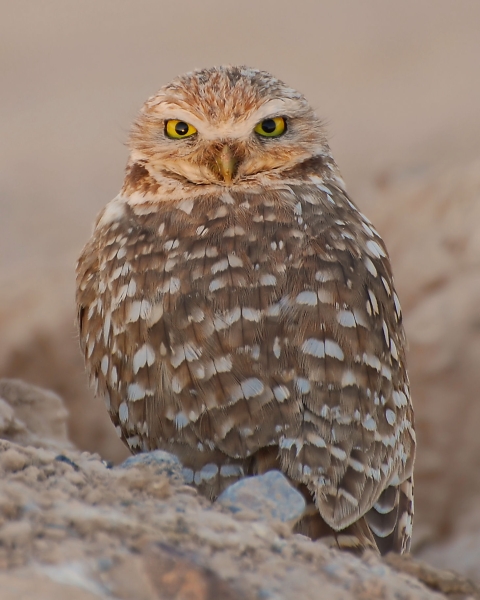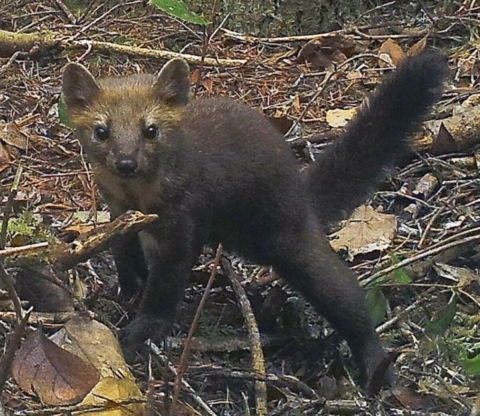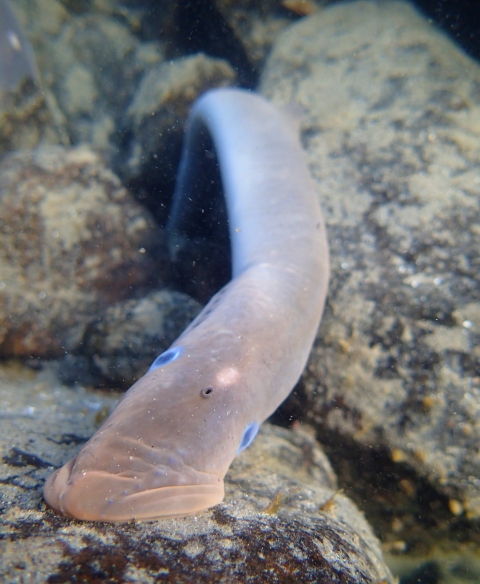People have lived in California for thousands of years, inhabiting the vast terrain from coastal wetlands to old growth forests and arid deserts. Before the land was dotted with buildings and etched with freeways, Indigenous people developed deep cultural connections with native wildlife.
Native species provide more than just subsistence for Indigenous people; they also inform their belief systems and cultural histories. Species now facing extinction are central to the stories and practices of Indigenous people in California.
In 2001, Congress developed a grant program to support important Tribal-led conservation programs. The Tribal Wildlife Grant program, administered by the U.S. Fish and Wildlife Service’s Wildlife and Sport Fish Restoration Program, provides funding to Tribes to develop and implement programs for the benefit of wildlife and their habitat.
“The Tribal Wildlife Grant program is a crucial partnership between the Service and Tribal Nations to preserve their natural resources and cultural heritage,” said Eldon Brown, Native American Liaison and Tribal Wildlife Grant Coordinator for the U.S. Fish and Wildlife Service.
Let’s look at a few California species that are supported by Tribal Wildlife Grants.
Burrowing Owl (Kukúulmal)
These cheerful little birds are known for perching near their burrows and bobbing their heads up and down as if trying to say hello. But if a potential predator gets too close for comfort, they’ll quickly dive inside their burrow for protection. Typically found in open landscapes, they require good visibility and rely on burrows dug by other animals.
The burrowing owl (Kukúulmal) is a species of cultural significance to the Pechanga Band of Indians, who have lived in Temecula Valley since time immemorial. Called the Kukúulmal, the owl is considered to be one of the Káamalam, or the “First People” to be born in the Creation oral history. in Luiseño oral history.
According to Creation History, the Káamalam were born from Tamáayawut (the earth mother) at `Éxva Teméeku, in what is now known as Temecula. While these First People were young, a man name Wuyóot took care of them and provided them with sustenance. When Wuyóot died, our cycles of life began and the Káamalam decided that some of them would become plants and animals and become food for the others.
The burrowing owl has been declining in numbers for many years, primarily due to habitat loss. To help the birds recover, the Pechanga Band sought a Tribal Wildlife Grant to assist with species monitoring, habitat restoration activities, cultural revitalization, public education and removal of invasive species invasive species
An invasive species is any plant or animal that has spread or been introduced into a new area where they are, or could, cause harm to the environment, economy, or human, animal, or plant health. Their unwelcome presence can destroy ecosystems and cost millions of dollars.
Learn more about invasive species on the Audie Murphy property in Menifee and Lake Elsinore, California.
Humboldt Marten
The Humboldt marten, a subspecies of the Pacific marten, is a medium size carnivore in the weasel family. Although they look cute, they’re fierce predators and notoriously difficult to spot. They prefer structurally complex forested environments with dense shrub layers that provide both food and places to hide from predators.
The Humboldt marten historically lived throughout the coastal forests of northwestern California and southwestern Oregon, but decades of habitat loss and fur trapping caused significant declines in their populations, and today there are only two known populations remaining in California and two in Oregon. One of the remaining populations falls partly on Yurok Tribal lands.
The marten is culturally significant to the Yurok Tribe and have been a part of the Tribe’s ceremonial regalia since time immemorial. To inform effective conservation efforts, the Yurok Tribe sought a Tribal Wildlife Grant to study baseline occupancy of the Humboldt marten on Tribal lands during their critical dispersal season.
“The information we are gathering will meaningfully contribute to the Yurok Tribe’s capacity to manage and improve Tribal forests for species such as the Humboldt marten, guiding preservation of high value habitat and prioritization of forest management activities to restore the health and resiliency of the population,” said Yurok Wildlife Department Director Tiana Williams-Claussen.
Pacific Lamprey
The Pacific lamprey has long provided a critical ecological function for both waterways and Tribes. These eel-like fish filter-feed in freshwater systems during their larval phase, cleaning the water and the sediment in which they rear by feeding on microorganisms.
Pacific lamprey spawn and reproduce in streams and have historically been a major part of the diets of Klamath Tribal people. They start out small, roughly the size of an eyelash. Lamprey travel out to the Pacific Ocean to feed in the ocean environment, where they are thought to be parasitic and derive nutrients from whales and fish, before returning to fresh water to spawn. Unfortunately, their numbers have declined significantly as dams, water diversions, and other anthropogenic impacts have impeded their ability to reach spawning grounds.
Due to their high fat content and caloric value, the Pacific lamprey has traditionally been a staple of the Hoopa peoples’ diet. Food sources are intimately intertwined with culture and history, and the lamprey’s decline represents a significant loss to the Tribe, both physically and culturally.
In order to better understand what was causing declines in lamprey abundance, the Hoopa Valley Tribe sought a Tribal Wildlife Grant to identify passage issues in the Trinity River Basin and conduct experiments to evaluate efficacy of various materials and passage designs. Their research into how lamprey pass road culverts and other potential barriers will provide valuable information and guide conservation efforts.
Learn more about the Tribal Wildlife Grant program here.









